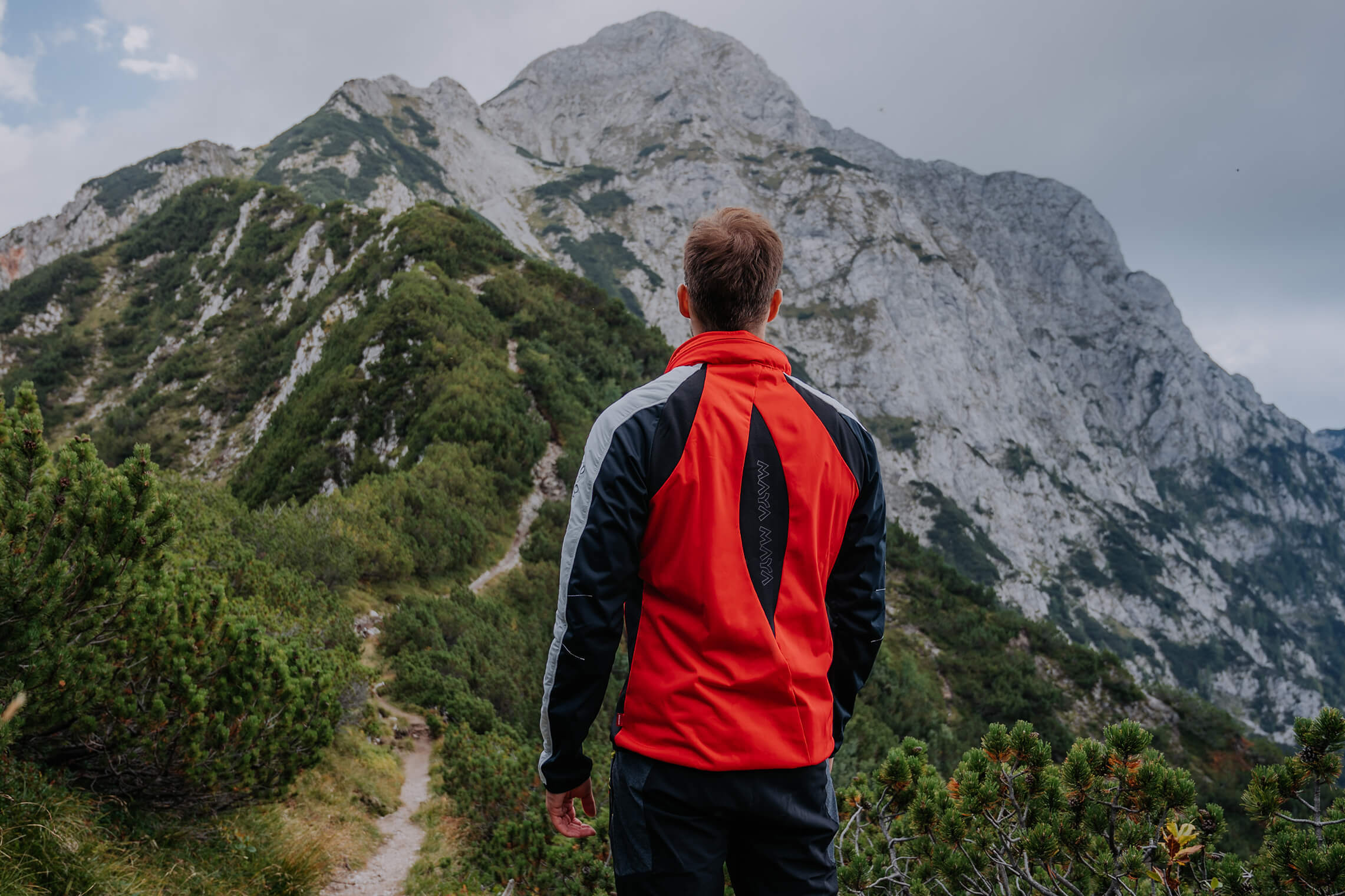
Trekking vs hiking: what is the difference?
Definition & similarities
You pack your backpack, head to the mountains with your friends and tell your family you’re going hiking. Or trekking? Or, both?!
If you’re confused about the difference between trekking and hiking, you’re not alone. People often think of trekking and hiking as synonyms, although they are similar. However, they have some differences that separate them into two distinct sports. So, they are similar but not identical. Are you confused too? Let’s dive into it.
TREKKING VS HIKING: DEFINITION
When it comes to defining the terms, the Oxford Dictionary is an expert on the subject. We all know of it and use it, so accordingly:
Trekking means to make a long or difficult journey, especially on foot.
Hiking is the activity of going for long walks in the country for pleasure.
Looking at these definitions, you can see that there is not much to distinguish between the two activities. They both essentially mean long walks. However, with trekking, you need more time and better organisation. That is the main distinction between trekking and hiking. Also, hiking is described as a “walk”, whereas trekking is a “journey”. That indicates that trekking is more than just a simple walk.
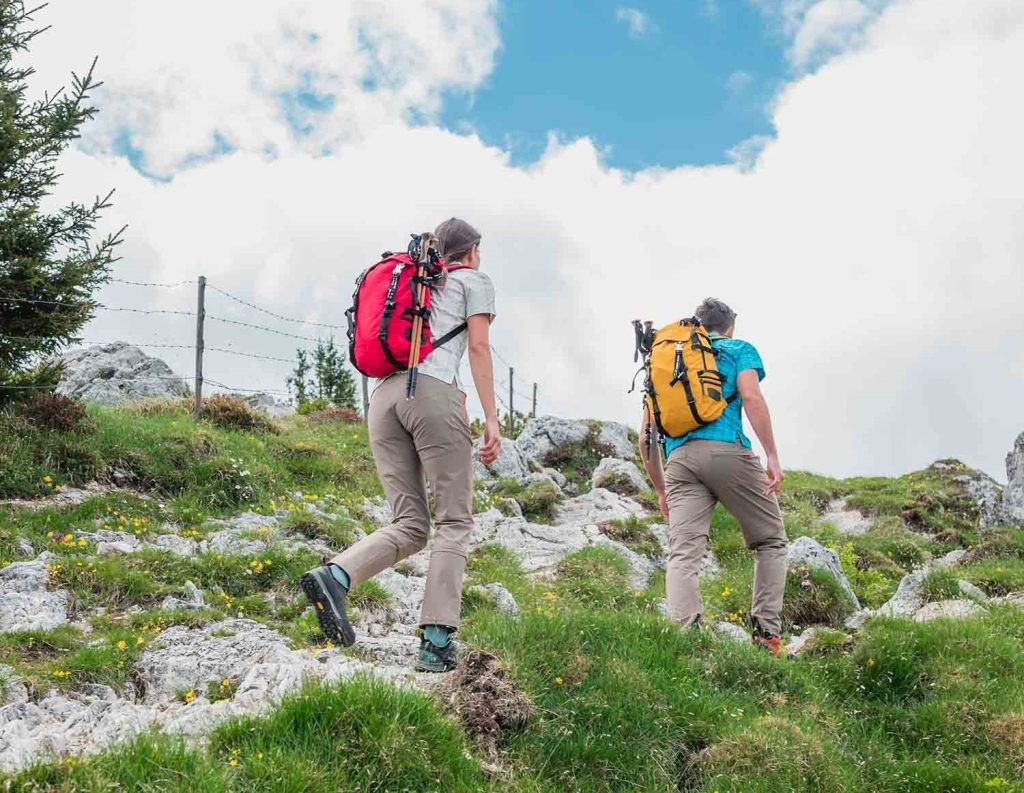
TREKKING VS HIKING: DIFFERENCES
1. DURATION
Duration is one of the most prominent distinctions between these two activities. Trekking usually lasts at least two days, but often even longer than that. People that go trekking more often than not, have a destination in mind. They aspire to reach this destination and can walk thousands of kilometres per trekking trip. On the other hand, hikes are shorter in duration compared to trekking. When somebody goes hiking, that is, in most cases, a few hours long walk or even a whole day of hiking. Hiking can also be an overnight experience, but it won’t take several days as trekking would usually.
2. TERRAIN
Another difference between trekking and hiking is the type of terrain that falls under these categories. Hikers often use hiking trails marked and go through mountains, forests, hills, or other natural environments that people want to explore. In comparison, trekking journeys are not always on marked trails and often go through unexplored nature such as mountains, roads, beaches, forests, and much more. In this aspect, trekking has more freedom because trekkers don’t conform to trails and markings. This way, they see untouched nature.
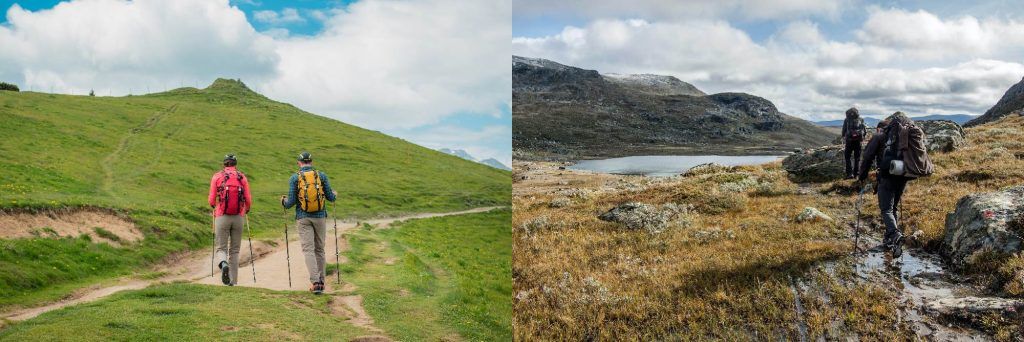
3. ACCOMMODATION
As previously mentioned, hiking can also be an overnight experience. Even in that case, the base is usually one place. For example, people stay in a mountain hut and go hiking each day to a different peak, always returning to the mountain hut as their base. People who practice trekking never return to the location they’ve been at before. Their journey focuses on a specific destination. Each time trekkers stop, they stay in a different accommodation. Whether that is a hotel, lodge, mountain tent, or another type of accommodation depending on the trekking route and the weather conditions.
4. EQUIPMENT
The equipment necessary for hiking and trekking can’t be the same logically. You will only need the basics on a hike – good shoes or boots. The latter must be suitable for mountain terrain. Do not forget appropriate clothing that can handle sudden changes in weather or temperatures and a backpack where you keep water, food, and other necessities. With hiking, there is no need for compasses or maps. More often than not, hiking trails are marked, and there are signs indicating where you should go and how far it is from your current location. The case is different when it comes to trekking. You would need a bit more equipment for trekking. Starting with a map or a compass, sleeping bags, sleeping mats, waterproof jackets, walking poles, multi-purpose clothing that’s breathable and fast-drying, etc.
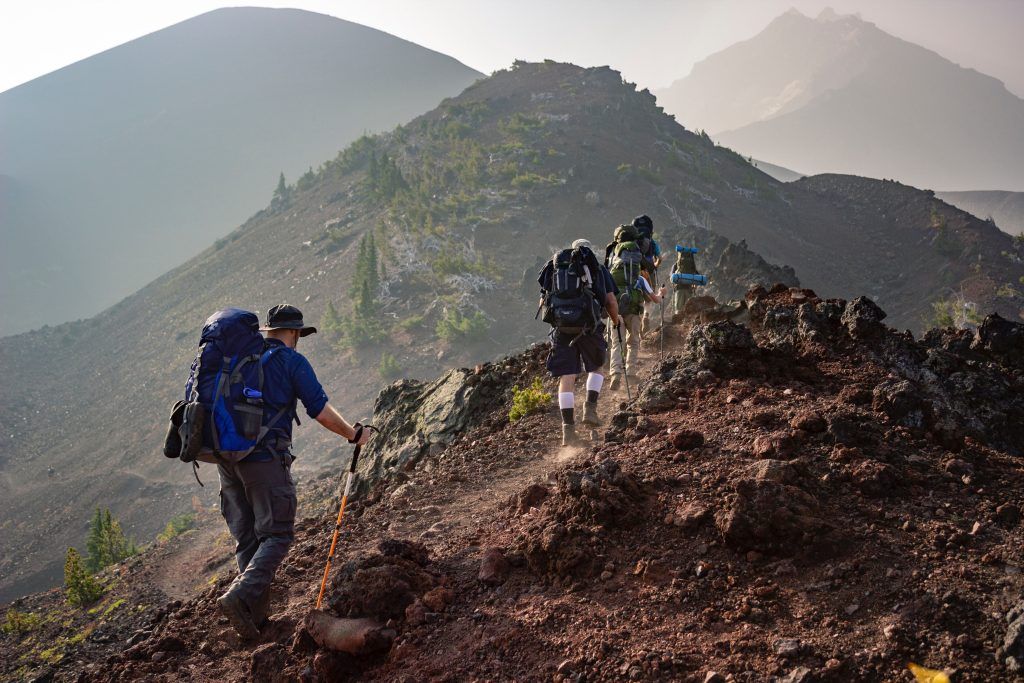
5. DIFFICULTY
By now, you know that trekking requires a different level of effort. It is not for everybody. It takes physical preparedness andtraining to trek for days without stopping. It’s an activity that takes a lot of time, goes through different terrains, and requires mental and physical preparedness.
On the other hand, hiking is a leisure activity. It can be done by many even if they haven’t hiked before. With hiking, it’s also easier to choose the right trail for your physical abilities. Usually, the paths come with a difficulty level, or they state how long they are, so you can more or less be aware of how difficult it will be. You can choose a trail easy in difficulty or moderate if you are not hiking often and feel like that is your threshold.
A fun fact is that the Guinness’ World record for the fastest trek to the North Pole took 41 days, 18 hours, and 52 minutes. The length of the trekking path was 785km. This explains perfectly how demanding trekking can become if you’re willing to push your limits.
TO SUM UP
If you are still reading, you have a good idea that there isn’t only one difference between hiking and trekking. Starting from the length of the activity, then the difficulty, the equipment, the accommodation, the terrain which you’re walking on- there are more differences between hiking and trekking than people realise.
Hiking is a shorter, easier journey, commonly walked on looped marked trails, to-and-back, or even destination hikes.
Trekking always involves a specific destination. A trekking path goes through different, often rough terrains and requires more equipment and preparedness of the person doing it.
If you are interested in starting with trekking, read our step-by-step Trekking 101: beginner’s guide to get you started.
Latest guides

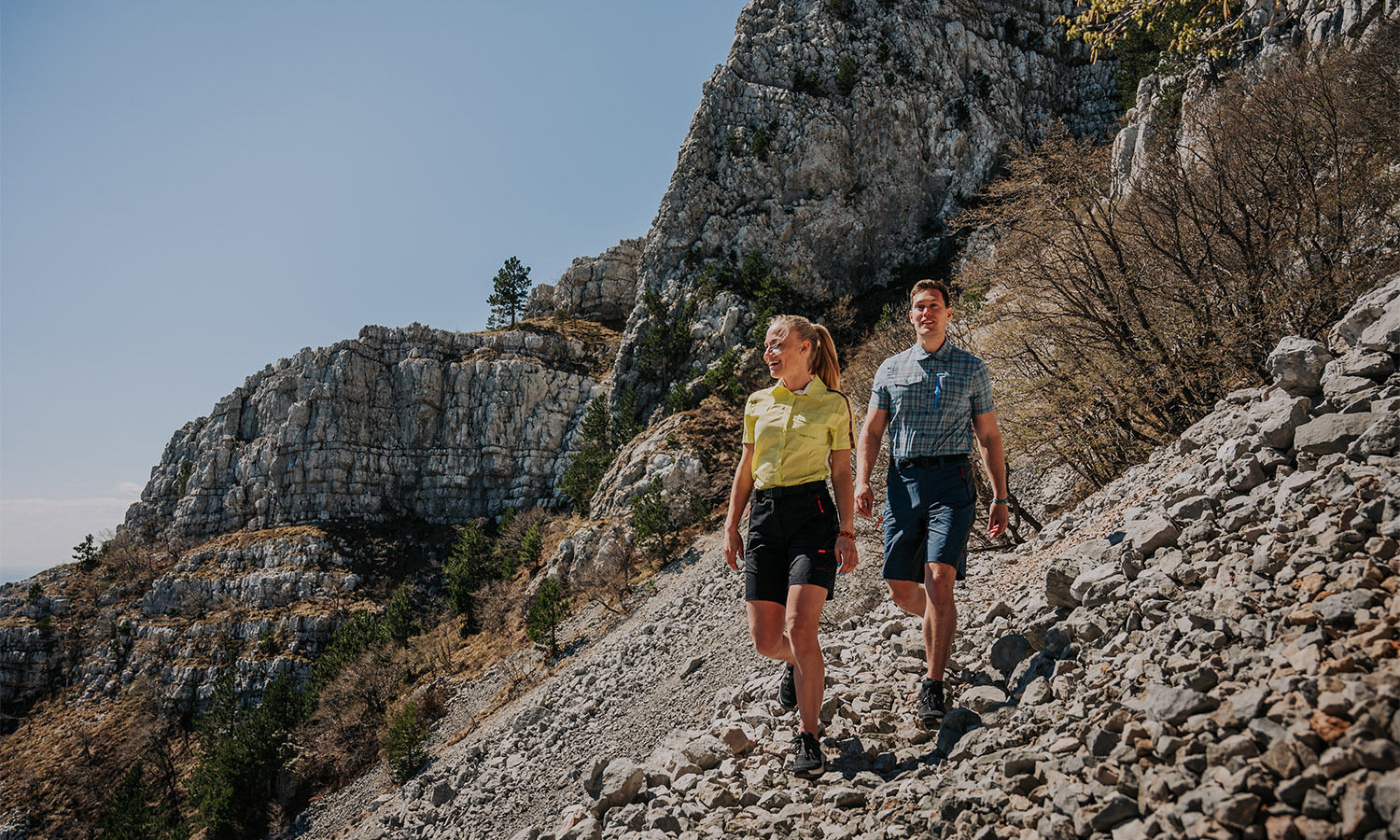
THE HEAT: Part 3
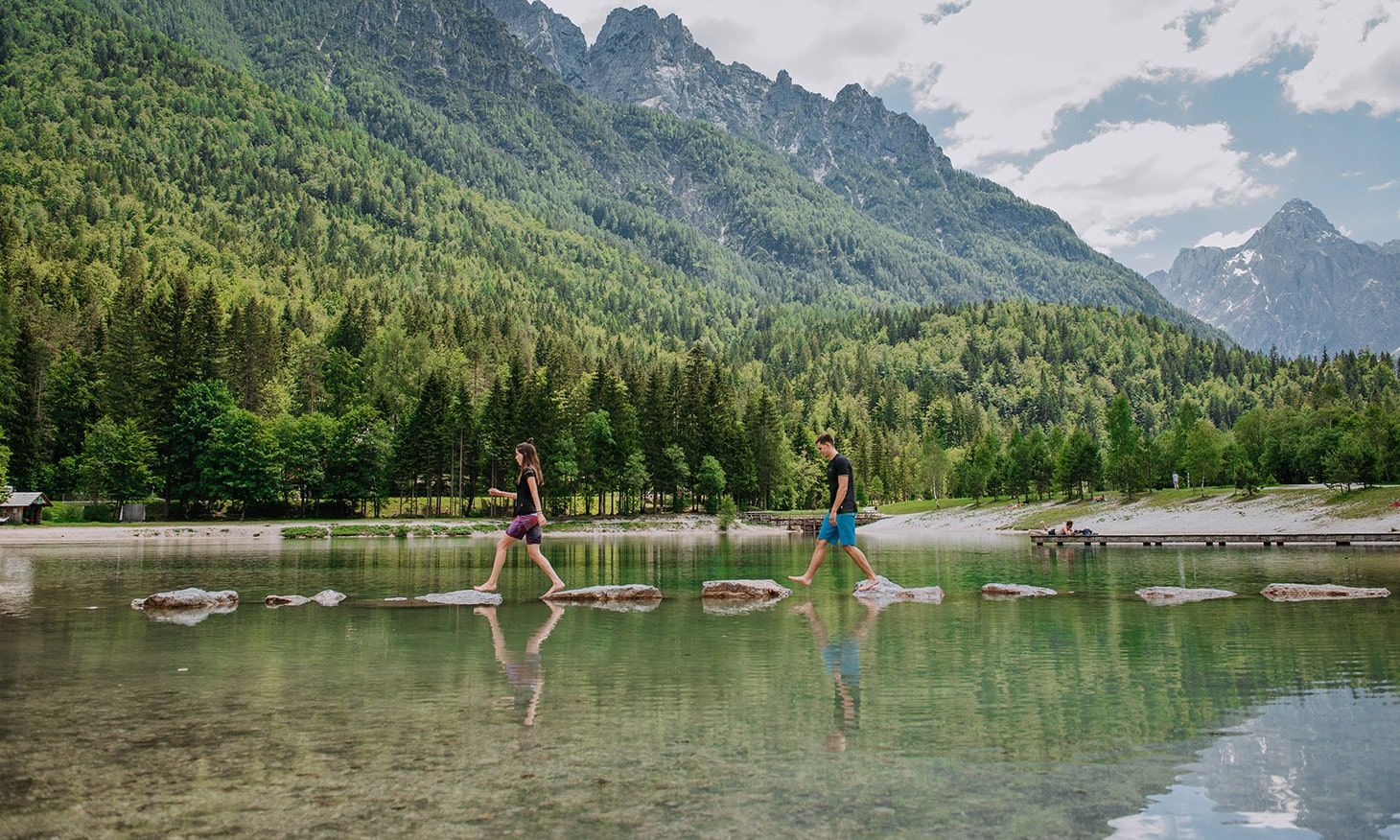
THE HEAT: Part 2
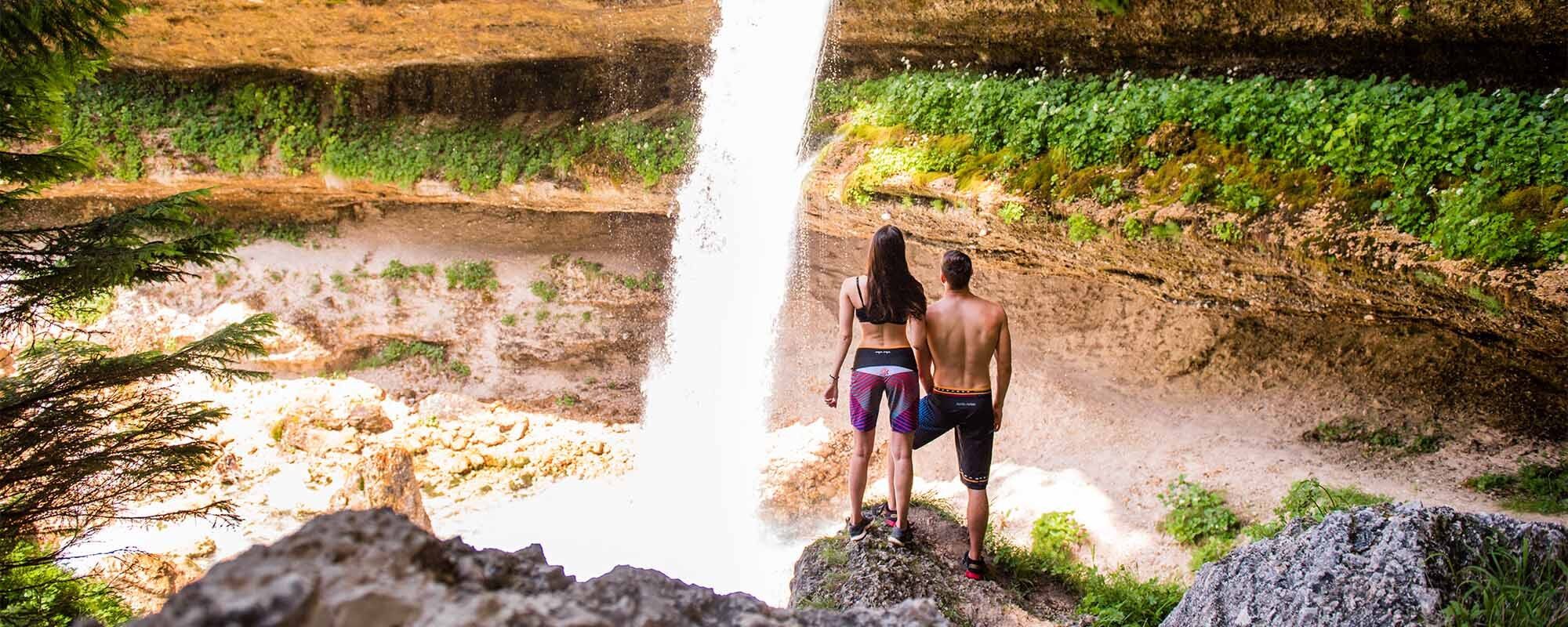
THE HEAT: Part 1
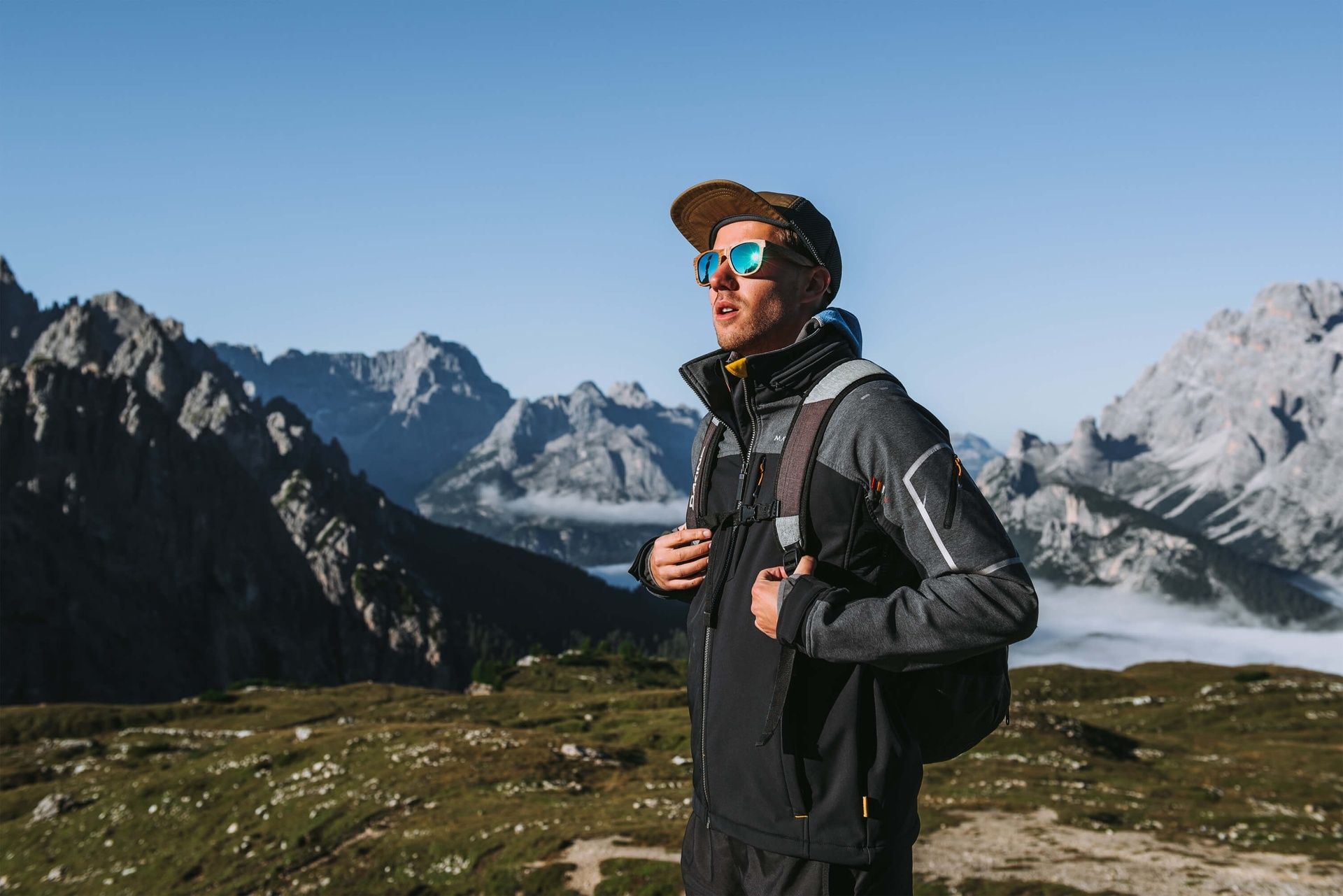
Thermal balance: what it means?
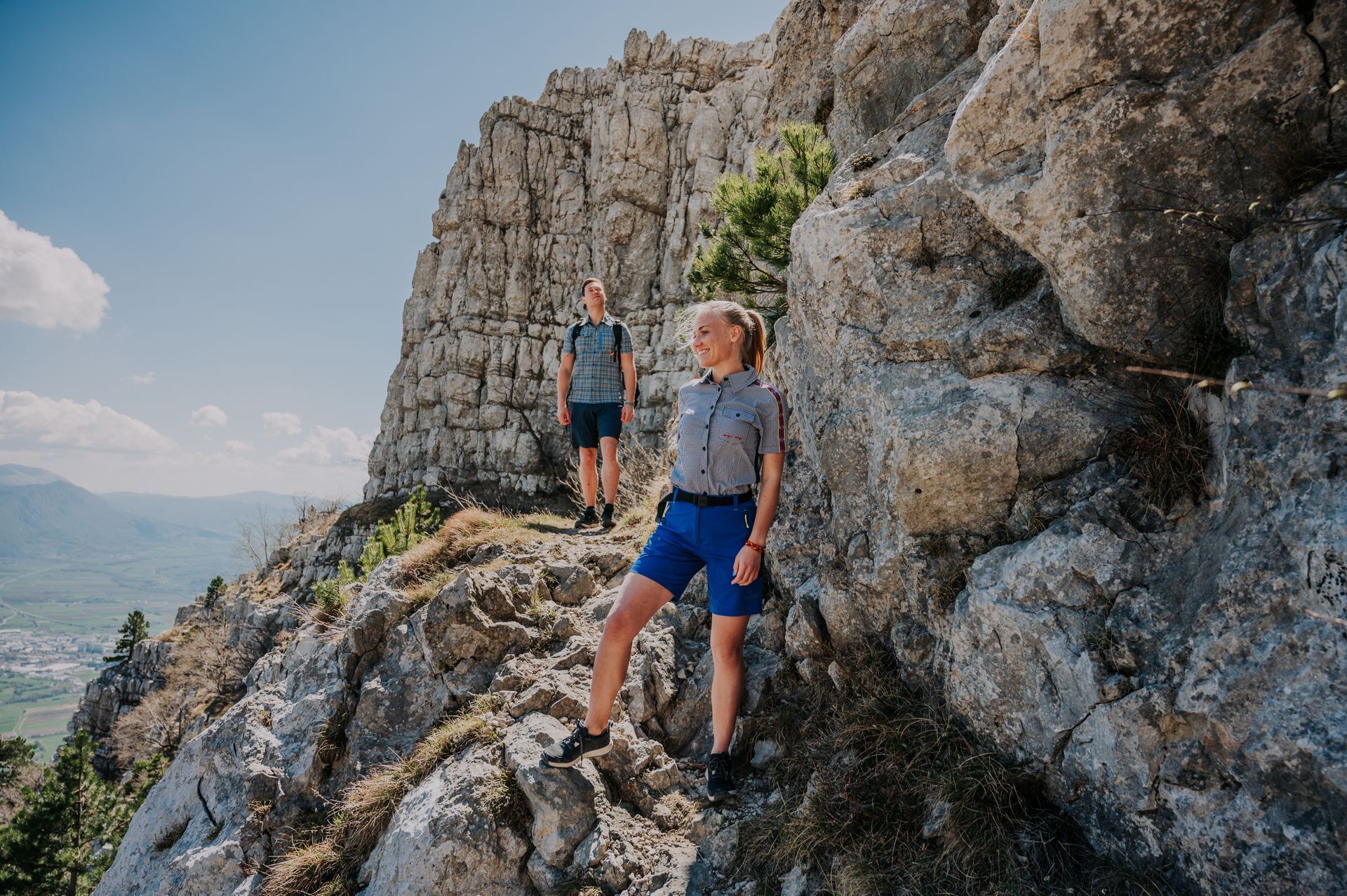
What do I wear for hiking?
Inspiring stories
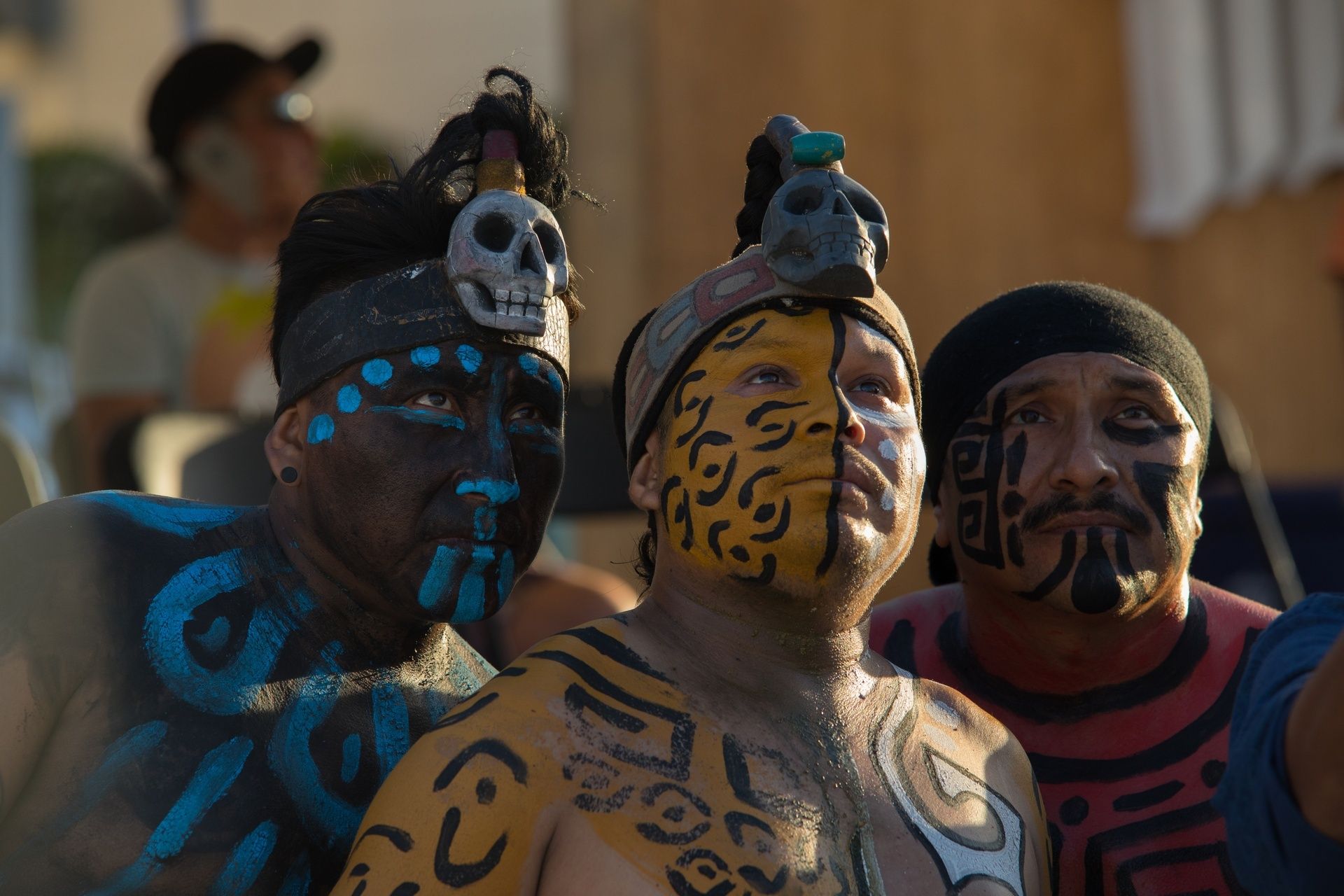
History of Ancient Mayans

Event recap
Discover the magic of MAYA MAYA at our Landquart event. Explore the ‘Unique and Indigenous’ collection, enjoy cocktails, and workshops.

What to wear for an autumn hike?
Gear up for colder days with our guide on hiking in dry conditions. Learn about layering, baselayer, softshell and pants for optimal comfort.

THE HEAT: Part 3
Stay stylish and protected under the summer sun with our perfect outfits for walking, beach outings, active vacations, and mountain hikes.

THE HEAT: Part 2
Stay safe in the heat with tips on UV protection, hydration, and clothing. Adapt to summer conditions for outdoor activities, enjoy the sun!

THE HEAT: Part 1
Learn how your body functions in the heat, how to stay safe outdoors, basics of thermal comfort, internal temperature regulation, sweating.

Thermal balance: what it means?
Thermal balance is crucial for our well-being. Understand what it means, how it affects us and learn about heat exchange and metabolism.



